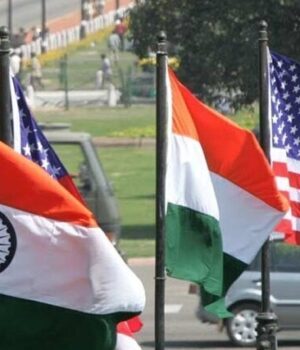Source : INDIA TODAY NEWS
Indian and US officials will hold three-day talks from April 23 in Washington for a proposed trade pact with terms of references (ToRs) covering around 19 chapters, such as tariffs, non-tariff barriers, and customs facilitation, official sources said.
The Indian official team is visiting the US to give further impetus to the negotiations in the 90-day tariff pause window and discuss these ToRs to iron out differences on certain issues before formally launching talks for the bilateral trade agreement (BTA).
advertisement
India’s chief negotiator, Additional Secretary in the Department of Commerce Rajesh Agrawal, will lead the team for the first in-person talks between the two countries. Agrawal was appointed as the next commerce secretary on April 18. He will assume office from October 1.
“Both sides will discuss the level of ambition. The ToRs will be further developed and discussed. What will be the pathway for talks? The ToRs will include issues like tariffs, non-tariff barriers, rules of origin, goods, services, custom facilitation and regulatory issues,” the official said, adding general contours of the pact will be discussed, besides scheduling, so that things can be finalised in 90 days.
The three-day deliberations assume significance, as a senior government official had recently stated that an interim trade agreement between the two countries could be finalised in the 90-day tariff pause announced by the Trump administration if it is a “win-win” for both sides.
advertisement
In international trade parlance, the level of ambition refers to the extent to which two countries are willing to commit to specific trade liberalisation measures.
The visit also follows senior official-level talks held between the two countries last month here.
Brendan Lynch, the Assistant US Trade Representative for South and Central Asia, was in India from March 25 to 29 for crucial trade discussions with Indian officials.
The two sides are keen to utilise the 90-day tariff pause, announced by US President Donald Trump on April 9, to push the talks.
On April 15, Commerce Secretary Sunil Barthwal had stated that India will try to close the negotiations as quickly as possible with the US.
India and the US have been engaged in negotiating a bilateral trade agreement since March. Both sides have targeted to conclude the first phase of the pact by the fall (September-October) of this year, with an aim to more than double the bilateral trade to USD 500 billion by 2030, from about USD 191 billion, currently.
In a trade pact, two countries either significantly reduce or eliminate customs duties on the maximum number of goods traded between them. They also ease norms to promote trade in services and boost investments.
While the US is looking at duty concessions in sectors like certain industrial goods, automobiles (electric vehicles particularly), wines, petrochemical products, dairy, and agriculture items such as apples, tree nuts, and alfalfa hay; India may look at duty cuts for labour-intensive sectors like apparels, textiles, gems and jewellery, leather, plastics, chemicals, oil seeds, shrimp, and horticulture products.
From 2021-22 to 2024-25, the US was India’s largest trading partner.
In the last fiscal, India’s exports to the US rose by 11.6 per cent to USD 86.51 billion as against USD 77.52 billion in 2023-24. The imports were up by 7.44 per cent in 2024-25 to USD 45.33 billion against USD 42.2 billion in 2023-24. With America, India had a trade surplus (the difference between imports and exports) of USD 41.18 billion in goods in 2024-25.
America accounted for nearly 19.78 of India’s total exports and 6.29 per cent of the total imports.
To address the gap and boost manufacturing, the Trump administration announced sweeping tariffs on April 2, including 26 per cent on India. It was later suspended for 90-day till July 9.
In 2024, India’s main exports to the US included drug formulations and biologicals (USD 8.1 billion), telecom instruments (USD 6.5 billion), precious and semi-precious stones (USD 5.3 billion), petroleum products (USD 4.1 billion), gold and other precious metal jewellery (USD 3.2 billion), ready-made garments of cotton, including accessories (USD 2.8 billion), and products of iron and steel (USD 2.7 billion).
Imports included crude oil (USD 4.5 billion), petroleum products (USD 3.6 billion), coal, coke (USD 3.4 billion), cut and polished diamonds (USD 2.6 billion), electric machinery (USD 1.4 billion), aircraft, spacecraft and parts (USD 1.3 billion), and gold (USD 1.3 billion).
Tune In
Must Watch
SOURCE :- TIMES OF INDIA




